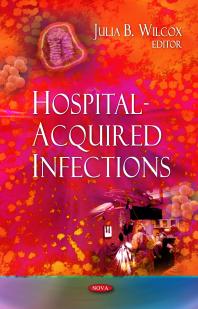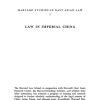(EBOOK PDF) Hospital Acquired Infections 1st Edition by Julia Wilcox ISBN 1606927280 9781606927281 full chapters
$50.00 Original price was: $50.00.$35.00Current price is: $35.00.
Hospital-Acquired Infections 1st Edition by Julia B. Wilcox – Ebook PDF Instant Download/Delivery: 1606927280, 978-1606927281
Full download Hospital-Acquired Infections 1st Edition after payment
Product details:
ISBN 10: 1606927280
ISBN 13: 978-1606927281
Author: Julia B. Wilcox
Hospital-Acquired Infections 1st Edition: Hospital-acquired infections (HAIs), also known as health-care-associated infections, encompass almost all clinically evident infections that do not originate from a patient’s original admitting diagnosis. Within hours after admission, a patient’s flora begins to acquire characteristics of the surrounding bacterial pool. Most infections that become clinically evident after 48 hours of hospitalisation are considered hospital-acquired. Infections that occur after the patient’s discharge from the hospital can be considered to have a nosocomial origin if the organisms were acquired during the hospital stay. This book presents a set of reports detailing the depth of the problems as well as suggesting remedies.
Hospital-Acquired Infections 1st Edition Table of contents:
PART I: REVIEW OF SCIENTIFIC DATA REGARDING TRANSMISSION OF INFECTIOUS AGENTS IN HEALTHCARE SETTINGS
- I.A. Evolution of the 2007 Document
- Objectives and Methods
- Changes or Clarifications in Terminology
- Scope
- I.B. Rationale for Standard and Transmission-Based Precautions in Healthcare Settings
- Sources of Infectious Agents
- Susceptible Hosts
- Modes of Transmission
- Contact Transmission
- Direct Contact Transmission
- Indirect Contact Transmission
- Droplet Transmission
- Airborne Transmission
- Emerging Issues Concerning Airborne Transmission of Infectious Agents
- Transmission from Patients
- Transmission from the Environment
- Other Sources of Infection
- Contact Transmission
- I.C. Infectious Agents of Special Infection Control Interest for Healthcare Settings
- Epidemiologically Important Organisms
- C.Difficile
- Multidrug-Resistant Organisms (MDROs)
- Agents of Bioterrorism
- Pre-Event Administration of Smallpox (Vaccinia) Vaccine to Healthcare Personnel
- Prions
- Severe Acute Respiratory Syndrome (SARS)
- Monkeypox
- Noroviruses
- Hemorrhagic Fever Viruses (HFV)
- Epidemiologically Important Organisms
- I.D. Transmission Risks Associated with Specific Types of Healthcare Settings
- Hospitals
- Intensive Care Units
- Burn Units
- Pediatrics
- Non-Acute Healthcare Settings
- Long-Term Care
- Ambulatory Care
- Home Care
- Other Sites of Healthcare Delivery
- Hospitals
- I.E. Transmission Risks Associated with Special Patient Populations
- Immunocompromised Patients
- Cystic Fibrosis Patients
- I.F. New Therapies Associated with Potentially Transmissible Infectious Agents
- Gene Therapy
- Infections Transmitted through Blood, Organs, and Other Tissues
- Xenotransplantation
PART II: FUNDAMENTAL ELEMENTS NEEDED TO PREVENT TRANSMISSION OF INFECTIOUS AGENTS IN HEALTHCARE SETTINGS
- II.A. Healthcare System Components that Influence the Effectiveness of Precautions to Prevent Transmission
- Administrative Measures
- Scope of Work and Staffing Needs for Infection Control Professionals
- Infection Control Nurse Liaison
- Bedside Nurse Staffing
- Clinical Microbiology Laboratory Support
- Institutional Safety Culture and Organizational Characteristics
- Adherence of Healthcare Personnel to Recommended Guidelines
- Administrative Measures
- II.B. Surveillance for Healthcare-Associated Infections (HAIs)
- II.C. Education of HCWs, Patients, and Families
- II.D. Hand Hygiene
- II.E. Personal Protective Equipment (PPE) for Healthcare Personnel
- Gloves
- Isolation Gowns
- Face Protection: Masks, Goggles, Face Shields
- Masks
- Goggles, Face Shields
- Respiratory Protection
- II.F. Safe Work Practices to Prevent HCW Exposure to Bloodborne Pathogens
- Prevention of Needlesticks and Other Sharps-Related Injuries
- Prevention of Mucous Membrane Contact
- Precautions During Aerosol-Generating Procedures
- II.G. Patient Placement
- Hospitals and Long-Term Care Settings
- Ambulatory Settings
- Home Care
- II.H. Transport of Patients
- II.I. Environmental Measures
- II.J. Patient Care Equipment and Instruments/Devices
- II.K. Textiles and Laundry
- II.L. Solid Waste
- II.M. Dishware and Eating Utensils
- II.N. Adjunctive Measures
- Chemoprophylaxis
- Immunoprophylaxis
- Management of Visitors
- Visitors as Sources of Infection
- Use of Barrier Precautions by Visitors
PART III: PRECAUTIONS TO PREVENT TRANSMISSION OF INFECTIOUS AGENTS
- III.A. Standard Precautions
- New Elements of Standard Precautions
- Respiratory Hygiene/Cough Etiquette
- Safe Injection Practices
- Infection Control Practices for Special Lumbar Puncture Procedures
- New Elements of Standard Precautions
- III.B. Transmission-Based Precautions
- Contact Precautions
- Droplet Precautions
- Airborne Precautions
- III.C. Syndromic and Empiric Applications of Transmission-Based Precautions
- III.D. Discontinuation of Transmission-Based Precautions
- III.E. Application of Transmission-Based Precautions in Ambulatory and Home Care Settings
- III.F. Protective Environment
PART IV: RECOMMENDATIONS
- Administrative Responsibilities
- Education and Training
- Surveillance
- Standard Precautions
- Transmission-Based Precautions
- Protective Environment (Table 4)
People also search for Hospital-Acquired Infections 1st Edition:
what are 6 most common hospital acquired infections
how to prevent hospital acquired infections
common hospital acquired infections
why are hospital acquired infections so dangerous
most common preventable hospital acquired infections
Tags:
Julia Wilcox,Hospital,Acquired,Infections




